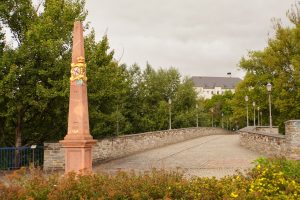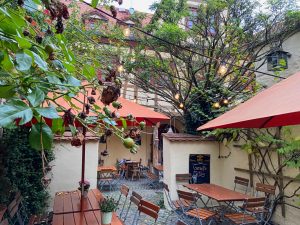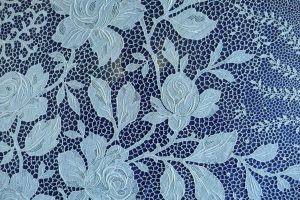The city of Plauen is located in the beautiful Vogtland. In the Vogtland Museum Plauen you can learn not only about the history of the city, but also about the Vogtland.
The Vogtlandmuseum Plauen is located in three listed houses in the city center of Plauen.

History of the museum
The three buildings in which the museum is located today have an interesting historical background. The semi-detached house (numbers 9 and 11) was built around 1787 by the cotton merchant Baumgärtel in the Louis Seize and Empire styles. The neighboring building was built almost in the same period, also by a cotton merchant, was also built in the Empire style. Both families used the building for a long time and until today some of the rooms are still furnished as it was usual at that time.
In 1920, the city bought the buildings and established a museum there with a focus on city and regional history. After a garden wing had been destroyed in the Second World War, the museum could be reopened as early as 1946 after instantsetzungsarbeiten. Since 1952, all three houses have been integrated into the museum concept.
What can you see in the Vogtlandmuseum Plauen?
In addition to the permanent exhibition, special exhibitions on various topics are regularly offered. Those who would like to reflect a bit on what they have seen after their visit can relax a bit in the museum’s quiet courtyard.

Visit to the special exhibition
We started our visit in the special exhibition about the artist Herrmann Vogel, which was on display in a separate area. The artist (1854-1921) is one of the most famous Vogtland artists of the 19th century. He illustrated, for example, fairy tale books of the Brothers Grimm. After Vogel’s death, the city of Plauen inherited his estate and gradually expanded the collection. Today, in addition to 1000 sketches and preparatory drawings, you can discover original documents, photos and objects from his personal life.


The drawings in the special exhibition appealed to us very much. Some of the pictures are drawn with great attention to detail. Often one hardly grasps the abundance of information in the pictures and has to be very careful not to miss the critical undertones and the pointed humor in the drawing. Also very nice are the little poems that aptly describe some of the images. Who would like to know more about the artist, can visit nearby in Krebes in the Herrmann-Vogel-Haus, a branch of the Vogtlandmuseum Plauen.
Vogtlandmuseum Plauen – the permanent exhibition
The tour of the Vogtlandmuseum Plauen begins on the upper floor of the building, which can also be reached by elevator.
First you walk through an impressive painting gallery. Here you can admire pictures with “Vogtland painting”. Works by artists are shown who have a special connection to the region. Whether born in the Vogtland or living there or whether the artist has chosen a special motif selection from the Vogtland is not really important. I am impressed by many pictures and even more pleased when I discover motifs on some pictures that seemed familiar to me. In the gallery hang pictures that show Plauen and offered us a small glimpse into the past of the city.




I find the area of the museum that deals with the tradition and culture of the region particularly interesting. In a small room I discover a small Vogtland language course. How is a word pronounced in High German, in Saxon and in Vogtlandish… I definitely had my fun and was glad that nobody heard my language attempts.


The tour continued through the museum’s period rooms. They impressively show what early classicist residential architecture of the middle classes once looked like in Plauen and the Vogtland region. Whether a kitchen area or an Art Nouveau room, there were interesting elements to discover in each room. Particularly impressive is the Green Salon with its beautiful stove. This, just like other stoves exhibited here, is not part of the original furnishings of the house, but comes from Plauen-Reusa Castle.


Did you know that Napoleon was in Plauen? The Napoleon Room in the Vogtland Museum in Plauen reminds us that he spent the night there with his wife from May 15 to 16, 1812.

I must admit, Napoleon is already impressive, but I was much more impressed by the fact that Clara Wieck, the famous wife of the no less famous composer Robert Schumann had also been in Plauen for a while. Having already learned so much about the pianist in Zwickau at the Robert Schumann House, the picture was now further completed. In Plauen you can see a piano on which she once played.

Another focus of the permanent exhibition can be explored in the “Room of the Reeves”. Here you can get answers to the question: Who were the reeves? What did thereeves do? How did the reeves shape the region?
The tour ends with the magnificent ballroom. This was built between 1787 and 1789 in the Louis Seize style. Famous personalities, such as the Saxon kings Friedrich August I and Anton I, are said to have visited this extraordinary room. Today, events and wedding ceremonies take place in the hall. I really liked the fact that although there were many modern chairs in the room, the charm and the beautiful ambience was not affected.

A great idea
In the Vogtland Museum there is a small room that is not suitable for large exhibits, but through which visitors must always pass. Here the artifact of the month is presented.

An exhibit is highlighted, especially described and appreciated. And it doesn’t have to be the most beautiful, largest, most colorful exhibit – during our visit, there was a coffee roasting drum. It’s a great idea to also show objects that otherwise receive less attention.
Address:
Nobelstraße 7 – 13,
08523 Plauen
Opening hours:
Tuesday – Sunday, Holidays: 11 am – 5 pm
Monday closed
Admission fees:
Adults: 5,-€
Discounts and combination tickets with other cultural institutions are offered.
The visit to the museum was part of a research trip to Plauen.The article was written independently of the visit.











Leave a Reply